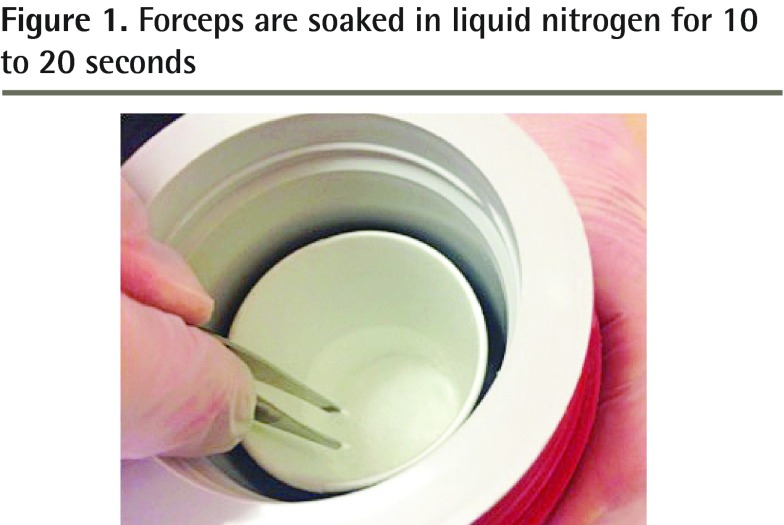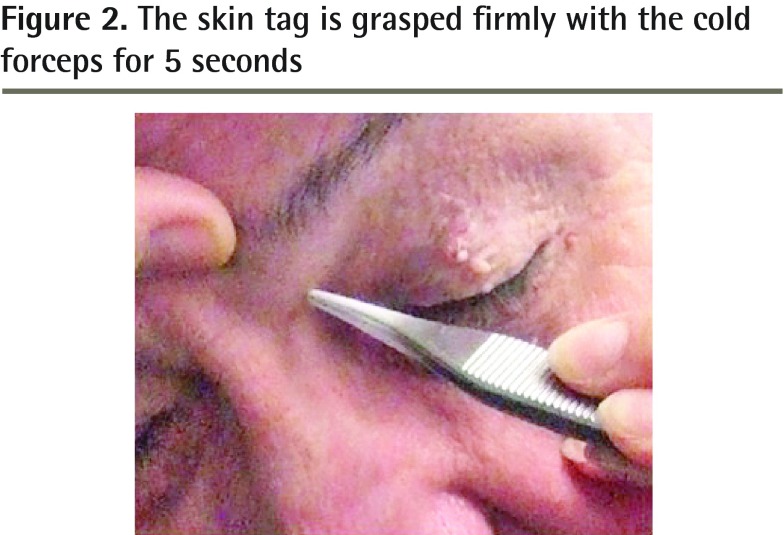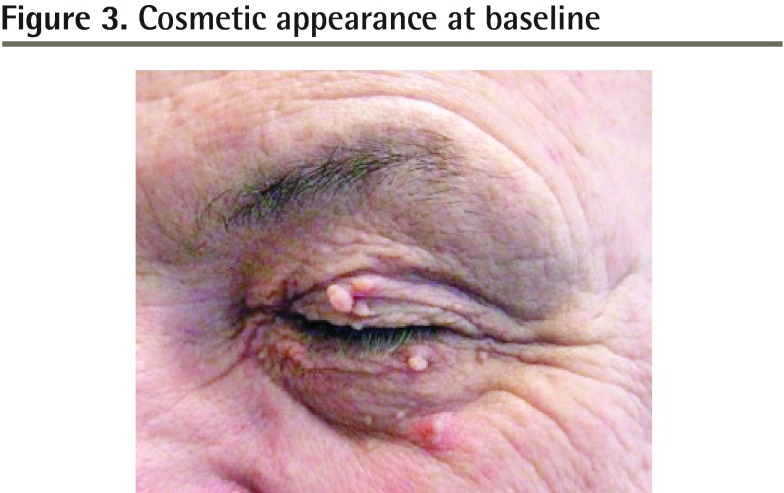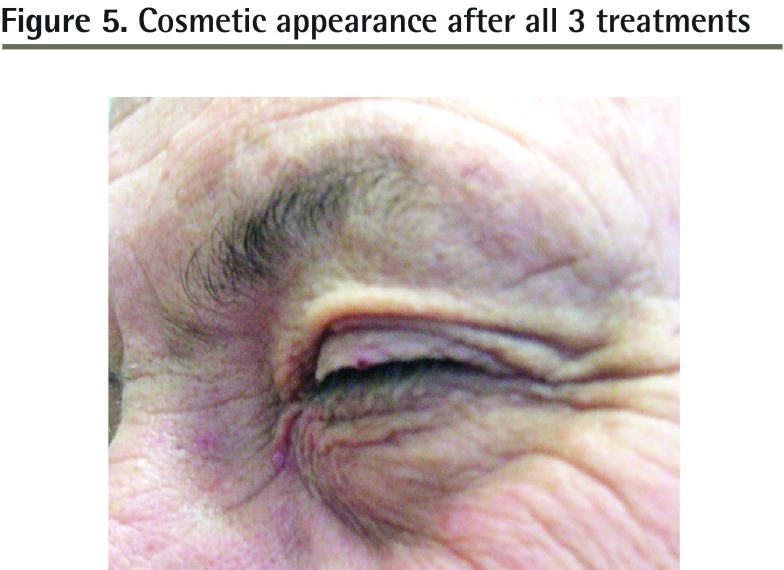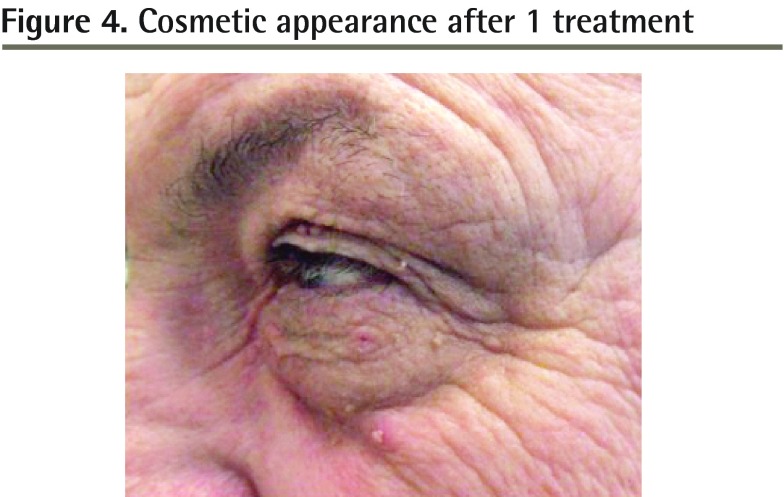Skin tags (acrochordons) are present in approximately 25% of the population and are among the most common benign skin tumours encountered by family physicians.1 They are typically skin-coloured or brown, pedunculated lesions ranging in size from 1 mm to 1 cm. While removal is rarely medically necessary, it is often requested by patients for various reasons, including cosmetic appearance or nuisance symptoms.
Removal techniques vary substantially, but generally involve a “pull and cut” or liquid nitrogen cryotherapy approach.2,3 Both such techniques are safe and effective, but they can be difficult to perform in close proximity to the eyes and other sensitive structures.2–4
Here we detail the case of a patient with many skin tags, particularly near his eyes, who wished to have them removed for cosmetic reasons. We have performed a safe, inexpensive, and effective method of skin tag removal near sensitive structures for a number of years. We are uncertain how we learned of this method, but suspect someone was told of it at a conference. We could not find it documented in our review of the literature. This method is well tolerated and can be performed in family physicians’ offices without the need for specialized equipment or expertise.
Procedure
A small amount of liquid nitrogen is decanted from its storage container. The tips of a pair of thumb forceps are soaked in liquid nitrogen for 10 to 20 seconds (long enough for frost to form but not so long that the metal is too cold to handle) (Figure 1).
Figure 1.
Forceps are soaked in liquid nitrogen for 10 to 20 seconds
The skin tag is grasped firmly with the cold forceps for a total of 5 seconds. The lesion will turn white (Figure 2). The forceps are returned to the liquid nitrogen to be cooled again. The process is repeated for a total of 3 freeze-thaw cycles per skin tag. Multiple skin tags can be frozen in this manner in a single session, according to skin tag number and patient tolerability of the procedure.
Figure 2.
The skin tag is grasped firmly with the cold forceps for 5 seconds
We suggest a 1-week interval for follow-up, re-examination, discussion of results, and repeat treatment if indicated. For the patient described, we performed weekly treatments for 3 consecutive weeks. The cosmetic appearance at baseline, after 1 treatment, and after all 3 treatments is illustrated (Figures 3 to 5, respectively).
Figure 3.
Cosmetic appearance at baseline
Figure 5.
Cosmetic appearance after all 3 treatments
Figure 4.
Cosmetic appearance after 1 treatment
We encourage readers to share some of their practice experience: the neat little tricks that solve difficult clinical situations. Praxis articles can be submitted online at http://mc.manuscriptcentral.com/cfp or through the CFP website (www.cfp.ca) under “Authors and Reviewers.”
Footnotes
Competing interests
None declared
References
- 1.Luba MC, Bangs SA, Mohler AM, Stulberg DL. Common benign skin tumors. Am Fam Physician. 2003;67(4):729–38. [PubMed] [Google Scholar]
- 2.Czarnowski C, Ponka D, Rughani R, Geoffrion P. Skin tag removal. Minor surgery video series. Can Fam Physician. 2008;54:1245. Erratum in: Can Fam Physician 2008;54:1681. [PMC free article] [PubMed] [Google Scholar]
- 3.Ponka D, Czarnowski C, Ballou S, Mioduszewski M. Cryotherapy. Minor surgery video series. Can Fam Physician. 2009;55:53. [PMC free article] [PubMed] [Google Scholar]
- 4.Pfenninger JL. Approach to various skin lesions. In: Pfenninger JL, Fowler GC, editors. Pfenninger & Fowler’s procedures for primary care. 3rd ed. Philadelphia, PA: Mosby; 2010. pp. 69–71. [Google Scholar]



